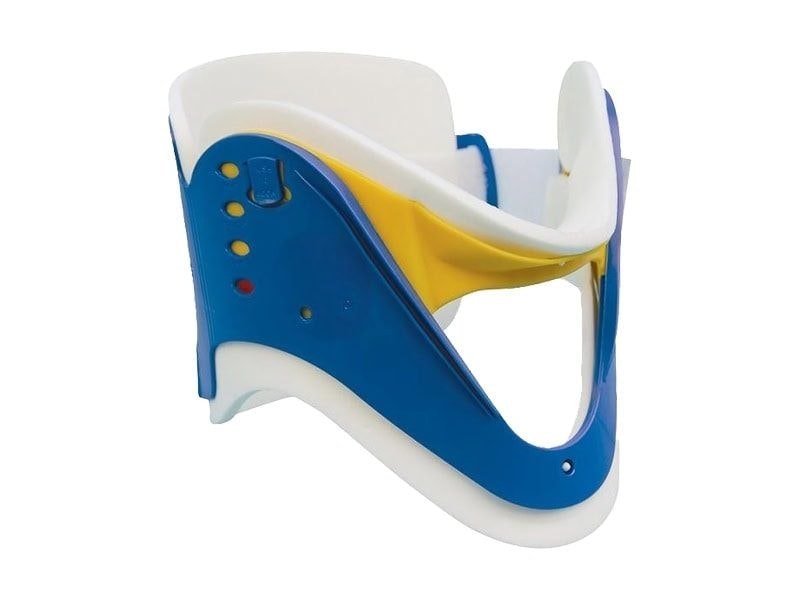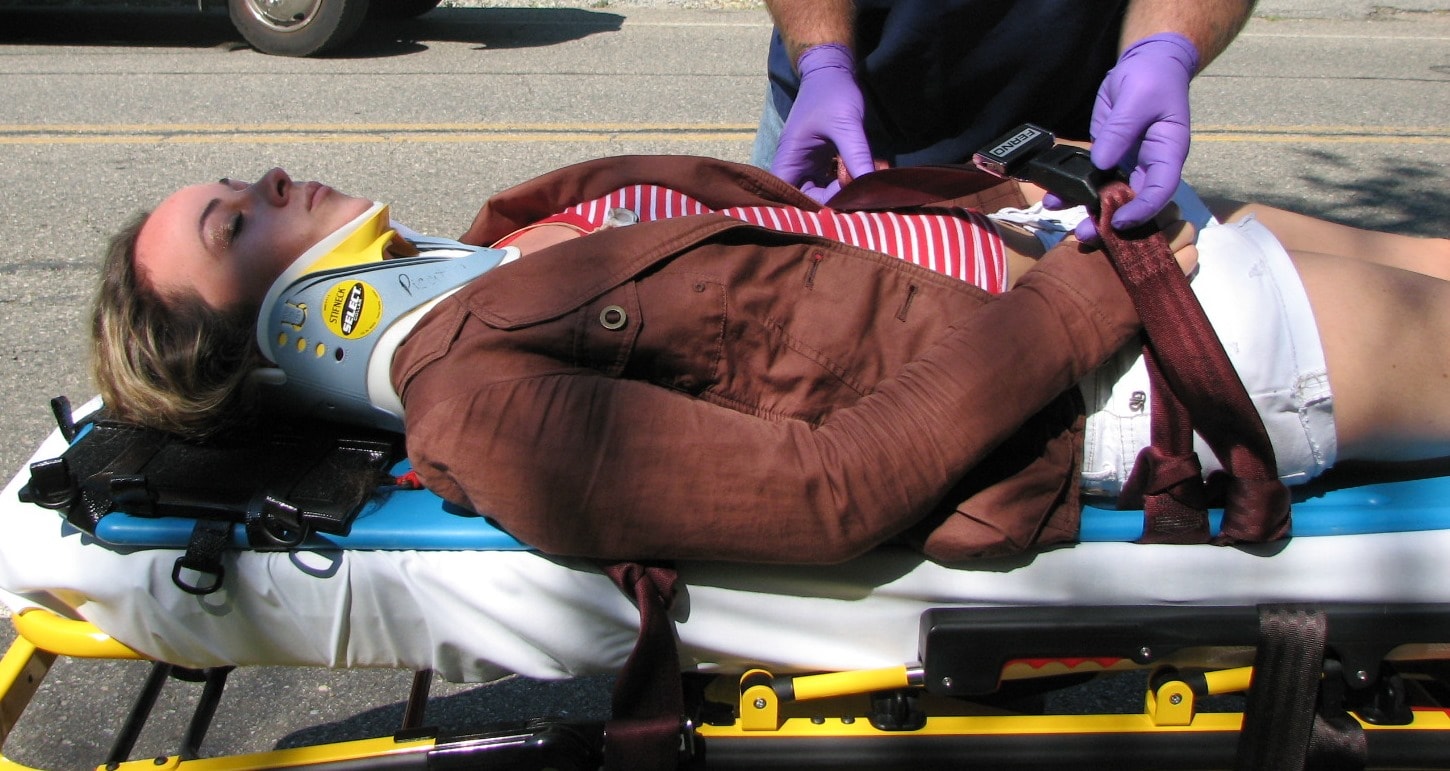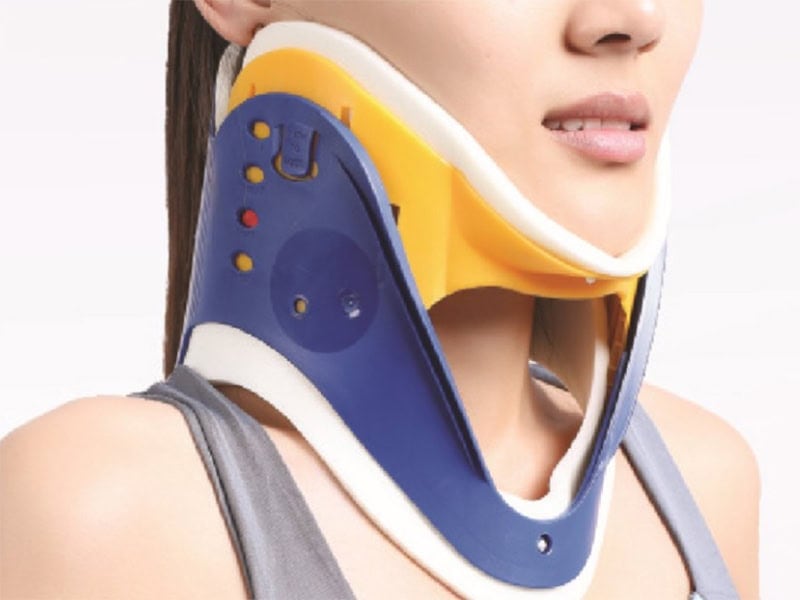What is a Cervical Collar?
A cervical collar is a medical device which is used to support and immobilize the neck in case of traumatic head or neck injury. It is normally called a Neck Brace or C-Collar. The primary function of a cervical collar is to limit the head movement. After neck surgery, they are highly crucial for promoting healing and preventing further injury.
To learn more about cervical collars, read the full article. This will provide you with helpful tips on their usage and will shed light on some common mistakes that you should avoid in this process.

Benefits of Wearing a Cervical Collar for Neck Pain Relief

Neck pain is one of the most prevalent and costly health problems in the United States as well as around the world. About 50–70% of US residents will experience neck pain at least once in their lives. Various factors, including poor posture and underlying medical conditions like arthritis, can cause chronic neck pain. In order to relieve pain, doctors often use cervical collars.
A cervical collar provides support and stability to the neck following spinal injuries. By restricting the movement of your neck, it helps in realigning the spinal cord and healing the muscles. It can relieve severe pain in the neck as it allows only gentle movement of the head.

This is why emergency healthcare professionals use cervical collars to support the heads of trauma patients. These patients suffer from neck injuries like whiplash, cervical spine fractures, and herniated discs. It is a common medical practice to use them for post-surgery recovery following spinal or neck surgeries. Doctors often prescribe the neck collars along with other treatments, such as physical therapy and exercise.
Different Types of Cervical Collars: Hard and Soft Cervical Collars

If you are a healthcare professional, you must have an idea about the different types of cervical collars. These types offer unique features that can tackle the specific needs of patients. There are two types of collars available in the market: Cervical Hard Collar and Soft Collar.
- Soft collar is made from materials like felt, foam, or rubber. It is often used for moderate neck pain relief. However, studies show they only reduce movement by about 17%, which may not be sufficient for serious injuries.
- The hard collar is made from plexiglass or plastic. They restrict head rotation and lateral movement more than the soft collars. These collars typically include chin support, allowing neck muscles to relax. They are commonly prescribed in case of severe neck injuries and spinal fractures.
When choosing the cervical collar, you should consider the severity of the injury and the desired level of support. For fast recovery, it is always advisable to consult a healthcare professional to choose the neck collar that suits your specific needs.
How to Use a Cervical Neck Collar?
Often, in the case of post-surgery, patients are advised to wear the collar all the time until the spine has healed, even during bathing or sleeping. This duration of time may be as short as 4 weeks or as long as 4 to 6 months. Using a cervical neck collar or neck brace correctly is essential for effective head and neck immobilization. Here’s a step-by-step guide for you to follow:
- Choose the Right Collar: Select a collar that fits the patient’s size and build. Measure the length of the neck to ensure proper fit.
- Prepare for Application: Have one practitioner stabilize the patient’s neck to prevent neck movement while the other applies the collar.
- Positioning the Collar: Place the collar around the patient’s neck. Ensure that the chin fits snugly into the chin piece for proper support.
- Adjust for Fit: Tighten the collar enough to immobilize the neck but not so tight that it restricts blood flow or causes discomfort. As a rule of thumb, you should be able to fit two fingers between the collar and the neck.
- Regular Evaluation: Frequently check the collar and the skin around the neck for any signs of pressure ulcers or irritation. Clean the collar and skin as needed to maintain hygiene.
- Monitor Comfort: Ask the patient about any discomfort, and adjust the collar if necessary to improve fit and comfort.
Furthermore, patients often find it difficult to wear the collars while doing daily life activities like sleeping, bathing or cleaning. To sleep comfortably with a cervical collar, sleep on your back and use a thin pillow to avoid putting extra pressure on your neck.
When bathing with a cervical collar, it’s typically easier to take a bath than a shower. Keep the collar dry. You can use plastic wrap around the collar. If you opt for showering, then do it while wearing the collar. After the shower, you should have someone remove the brace, replace the padded liner with a dry one, and reapply the brace. It is important that the patient should not move while the brace is off. While doing house chores, make sure that your neck stays in position and avoid twisting or turning at all costs.
Common Mistakes to Avoid

When using a cervical collar, it’s important to avoid certain common mistakes to ensure effectiveness and prevent complications. As per the New York State Department of Health, you should avoid the following mistakes:
- Wearing the Collar for Too Long: Extended use can lead to weakening and stiffness of neck muscles. Especially the prolonged use of a rigid cervical collar can lead to pressure sores, which can ultimately lead to skin infection.
- Clearance: Typically, the most suitable option is to remove the collar within 24 hours of collar placement. However, if the collar is needed for more than 24 hours because of patient needs, then stiff collars should be replaced with padded collars as they are designed for long-term use.
- Ignoring Healthcare Instructions: Always adhere to specific guidelines from your provider regarding the use, fit, and care of the collar to ensure proper support and recovery.
- Neglecting Regular Evaluation and Cleaning: Frequently check the collar and the skin around the neck. Clean the collar and skin as needed to maintain hygiene. Unless otherwise advised by the doctor or your organization, remove the collar with the help of another person to wash the patient’s face and neck at least once per day.
- You should regularly check for Skin Breakdown under the brace. You will be able to identify reddened or broken skin. Such infections can be caused by contact rubbing, added pressure, or moisture. When such signs appear, this means that the brace of the collar does not fit properly on the patient’s neck. In this case, you need to readjust the collar or choose a more suitable option.
- Disregarding Alternative Treatments: While the cervical collar is useful, it should often be part of a broader treatment plan. Consider incorporating physical therapy and exercise to improve recovery and strengthen neck muscles.
- The patient should avoid putting extra strain on the neck. For example, you should not stand or sit for long periods as this might cause discomfort in your back. Also, avoid sitting in soft, low chairs as your back posture becomes rounded. This puts pressure on your neck.
- Must take care when walking as they will not be able to see the ground. Avoid extreme bending and twisting of the spine. When standing up from your bed or sofa, you must use your arm and leg so your spine remains in proper alignment.
By being mindful of these common mistakes, you can enhance the effectiveness of the cervical collar and support your recovery.
Care and Maintenance of a Cervical Collar
Follow specific instructions from a healthcare provider for proper maintenance of your cervical collar. In order to increase the longevity of these collars, hospitals often have maintenance guidelines for healthcare professionals. Here are some of the guidelines you must follow:
- Storage: When not in use, store the collar in a clean, dry area to prevent damage. Avoid leaving it in damp or hot places.
- Daily Cleaning: Wash the collar daily to prevent bacterial growth and skin irritation. Most soft collars can be cleaned in a sink with warm water and gentle soap; avoid harsh soaps, detergents, or bleach to prevent skin reactions. After washing, lay the collar flat to dry. For hard collars, replace any dirty pads and rinse the front and back panels.
- Follow Medical Advice: Always adhere to any specific care instructions provided by your healthcare provider. For example, only your doctor can tell you how long you need to wear the cervical collar for proper healing of muscles in your neck.
When to Seek Medical Advice for Pain in Neck Muscles

While this article will give you all the basic information you need when using or storing your cervical collar, however, there are times when you must reach out to a professional for medical help. If any of the following happens, make sure to get advice from your doctor:
- Persistent Pain in Neck Muscles: If you experience increasing discomfort, pain, or stiffness with the collar, contact a doctor.
- Skin Damage: If you notice severe skin irritation, swelling, or cuts from the collar, it’s important to adjust the fit or change the collar as per medical instructions.
- Improper Healing process: If the collar isn’t providing adequate support, or if your symptoms aren’t improving, a follow-up visit with your healthcare provider may be necessary.
In case of such pain and symptoms, you should reach out to the healthcare practitioner for specific advice. While all this general information will improve your understanding, it cannot serve as a substitute for professional medical counsel.
Alternatives to Cervical Collars

Patients with neck pain often require a multidisciplinary approach to treatment, which may include physical therapy and pain management strategies. Physical therapy and targeted exercises can enhance neck muscle strength and aid recovery. You can also opt for other medical devices, such as neck braces or orthotics, to provide additional support to the neck and spinal cord. Also, treatments like acupuncture or chiropractic care may help alleviate neck pain and facilitate healing. It’s essential to consult with a medical professional to determine the most appropriate course of treatment tailored to your specific needs.
Conclusion
Cervical collars provide support and protection for the neck and spinal cord, often used in treating neck injuries, surgeries, and certain types of neck pain. You can choose between soft and rigid cervical collars based on the intensity of pain you are facing. While they are effective for short-term treatment, prolonged use may lead to weakening and stiffening of the neck muscles. Therefore, it’s important to follow medical guidance regarding their duration of use.
If you’re experiencing neck pain, reach out to the professionals at Jiekang for expert cervical collar care tailored to your needs. In addition to cervical collars, we offer a range of other medical devices designed to enhance health safety for both you and those around you. Remember, your health should always be a top priority, and at Jiekang, we strive to provide the support necessary for optimal well-being.



